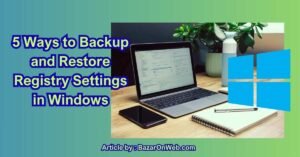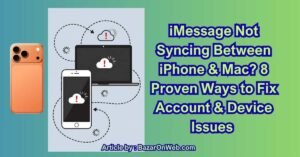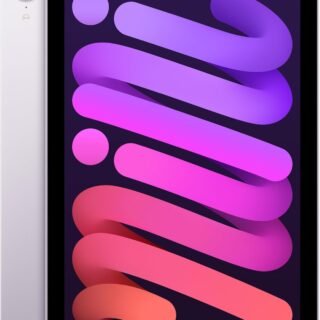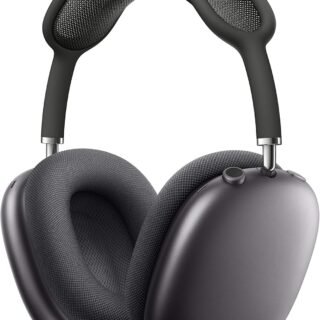Category
Popular Articles
- AI (12)
- Android (38)
- App Suggest (4)
- Apple (15)
- Apple TV (2)
- Bluetooth (3)
- Cars (2)
- ChatGpt (1)
- Chrome (2)
- Did you know? (1)
- E-Commerce News (1)
- Ecommerce Websites business (7)
- Electronics Shopping (5)
- Fashion Tips (3)
- Gaming (4)
- Google Gemini (3)
- Hair Care Tips (2)
- How to (13)
- iCloud (1)
- Infotainment System (1)
- Iphone (101)
- Job Posting (1)
- Lifestyle (3)
- Mac (20)
- Mobile Games (1)
- Netflix (1)
- Online Shopping Websites (2)
- Personal Finance Management (3)
- Product Reviews (3)
- Roku TV (4)
- Samsung (9)
- Shopping Tips (10)
- Spotify (1)
- Tech (92)
- Windows 11 (18)
- Zero Waste (3)
Discounted Products
-
 Leo Creation 144 TC Cotton Double Jaipuri Prints Flat Bedsheet(Pack of 1, Blue, Gree, Red, Grey, Light Grey)
Leo Creation 144 TC Cotton Double Jaipuri Prints Flat Bedsheet(Pack of 1, Blue, Gree, Red, Grey, Light Grey)
₹2,999.00Original price was: ₹2,999.00.₹329.00Current price is: ₹329.00. -
 Home Garage 210 TC Cotton King Floral Fitted (Elastic) Bedsheet(Pack of 1, Grey)
Home Garage 210 TC Cotton King Floral Fitted (Elastic) Bedsheet(Pack of 1, Grey)
₹999.00Original price was: ₹999.00.₹299.00Current price is: ₹299.00. -
 Goodrik 140 TC Cotton Double 3D Printed Flat Bedsheet(Pack of 1, Brown)
Goodrik 140 TC Cotton Double 3D Printed Flat Bedsheet(Pack of 1, Brown)
₹499.00Original price was: ₹499.00.₹229.00Current price is: ₹229.00. -
 GLOBALSHOP 350 TC Microfiber Double Floral Flat Bedsheet(Pack of 1, Multicolor)
GLOBALSHOP 350 TC Microfiber Double Floral Flat Bedsheet(Pack of 1, Multicolor)
₹1,250.00Original price was: ₹1,250.00.₹263.00Current price is: ₹263.00. -
 RisingStar 250 TC Microfiber King Printed Fitted (Elastic) Bedsheet(Pack of 1, FITTED-ROUND-CIRCLES-PREMIUM)
RisingStar 250 TC Microfiber King Printed Fitted (Elastic) Bedsheet(Pack of 1, FITTED-ROUND-CIRCLES-PREMIUM)
₹2,299.00Original price was: ₹2,299.00.₹299.00Current price is: ₹299.00. -
 Home Garage 210 TC Cotton King Floral Fitted (Elastic) Bedsheet(Pack of 1, Fitted Black Green)
Home Garage 210 TC Cotton King Floral Fitted (Elastic) Bedsheet(Pack of 1, Fitted Black Green)
₹1,299.00Original price was: ₹1,299.00.₹299.00Current price is: ₹299.00. -
 Home Garage 180 TC Cotton King 3D Printed Flat Bedsheet(Pack of 1, White)
Home Garage 180 TC Cotton King 3D Printed Flat Bedsheet(Pack of 1, White)
₹999.00Original price was: ₹999.00.₹229.00Current price is: ₹229.00. -
 Home Sizzler 153 cm (5 ft) Polyester Room Darkening Window Curtain (Pack Of 2)(Floral, Maroon)
Home Sizzler 153 cm (5 ft) Polyester Room Darkening Window Curtain (Pack Of 2)(Floral, Maroon)
₹799.00Original price was: ₹799.00.₹299.00Current price is: ₹299.00. -
 Panipat Textile Hub 152.4 cm (5 ft) Polyester Window Curtain (Pack Of 2)(Solid, Aqua)
Panipat Textile Hub 152.4 cm (5 ft) Polyester Window Curtain (Pack Of 2)(Solid, Aqua)
₹1,899.00Original price was: ₹1,899.00.₹299.00Current price is: ₹299.00. -
 Home Sizzler 214 cm (7 ft) Polyester Semi Transparent Door Curtain (Pack Of 2)(Floral, Maroon)
Home Sizzler 214 cm (7 ft) Polyester Semi Transparent Door Curtain (Pack Of 2)(Floral, Maroon)
₹1,199.00Original price was: ₹1,199.00.₹399.00Current price is: ₹399.00. -
 Home Sizzler 153 cm (5 ft) Polyester Room Darkening Window Curtain (Pack Of 2)(Floral, Brown)
Home Sizzler 153 cm (5 ft) Polyester Room Darkening Window Curtain (Pack Of 2)(Floral, Brown)
₹799.00Original price was: ₹799.00.₹299.00Current price is: ₹299.00. -
 Stella Creations 214 cm (7 ft) Polyester Room Darkening Door Curtain (Pack Of 2)(Abstract, Brown)
Stella Creations 214 cm (7 ft) Polyester Room Darkening Door Curtain (Pack Of 2)(Abstract, Brown)
₹1,299.00Original price was: ₹1,299.00.₹449.00Current price is: ₹449.00. -
 Homefab India 152.5 cm (5 ft) Polyester Room Darkening Window Curtain (Pack Of 2)(Floral, Light Blue)
Homefab India 152.5 cm (5 ft) Polyester Room Darkening Window Curtain (Pack Of 2)(Floral, Light Blue)
₹1,199.00Original price was: ₹1,199.00.₹319.00Current price is: ₹319.00. -
 Urban Home 214 cm (7 ft) PVC Transparent Door Curtain Single Curtain(Solid, Off White)
Urban Home 214 cm (7 ft) PVC Transparent Door Curtain Single Curtain(Solid, Off White)
₹699.00Original price was: ₹699.00.₹203.00Current price is: ₹203.00. -
 Panipat Textile Hub 213 cm (7 ft) Polyester Door Curtain (Pack Of 2)(Solid, Brown)
Panipat Textile Hub 213 cm (7 ft) Polyester Door Curtain (Pack Of 2)(Solid, Brown)
₹1,199.00Original price was: ₹1,199.00.₹349.00Current price is: ₹349.00.
Affiliate Links
Promotion

As someone who juggles work and family life, my Mac has become my command center—whether I’m finishing a marketing project, printing school assignments for my kids, or scanning PTA documents. Having a reliable printer, scanner, and copier connected to your Mac saves so much time. The good news is that Apple makes the setup process fairly straightforward, especially with modern all-in-one devices.
In this guide, I’ll walk you through step by step how to connect your printer, scanner, or copier to your Mac, troubleshoot common problems, and keep everything running smoothly.
Step 1: Check Compatibility
Before you start plugging things in, confirm that your device is compatible with macOS.
- Go to the printer or scanner manufacturer’s website.
- Check the support page for your specific model.
- Look for macOS drivers or AirPrint support.
Most new printers and all-in-one machines support AirPrint, Apple’s built-in printing and scanning technology, so you don’t always need to install extra software.
Step 2: Decide How to Connect
You have three main options for connecting your printer, scanner, or copier to your Mac:
- USB Connection: Easiest option if you prefer a wired setup.
- Wi-Fi Connection: Best for wireless printing and scanning from anywhere in your home.
- Ethernet (Wired Network): Useful for office setups where multiple people share the same device.
Step 3: Add Your Device via System Settings
Now it’s time to connect your printer or all-in-one device.
For USB Connections:
- Plug the printer into your Mac using the supplied USB cable.
- Your Mac should automatically detect it.
- Open System Settings > Printers & Scanners.
- Click the “+” button to add the device if it doesn’t appear automatically.
For Wi-Fi Connections:
- Make sure your printer is turned on and connected to the same Wi-Fi network as your Mac.
- On your Mac, go to System Settings > Printers & Scanners.
- Click the “+” button.
- Select your printer from the list (look for one marked as Bonjour or AirPrint).
- Click Add.
For Ethernet Connections:
- Connect your printer to the router using an Ethernet cable.
- Follow the same steps as Wi-Fi to add it in Printers & Scanners.
Step 4: Install Manufacturer Software (If Needed)
Although macOS handles many printers natively, some advanced features like two-sided scanning or ink management may require manufacturer software.
- Visit the printer brand’s official support site.
- Download the latest drivers or utility software for macOS.
- Install and restart your Mac if necessary.
Step 5: Test Printing, Scanning, and Copying
After setup, make sure everything works as expected.
Test a Print Job
- Open any document or photo.
- Press Command + P to print.
- Select your printer and check if the output is correct.
Test a Scan
- Open Preview (macOS’s built-in app).
- Go to File > Import from Scanner.
- Select your device and try scanning a page.
Test Copying
Most all-in-one printers let you copy directly from the device itself. Place a page on the scanner glass, press Copy, and see if it prints properly.
Step 6: Set Default Printer
If you have multiple printers or scanners, it’s helpful to set one as your default.
- Go to System Settings > Printers & Scanners.
- Right-click on your preferred printer.
- Select Set Default Printer.
This ensures you don’t accidentally send documents to the wrong printer.
Step 7: Troubleshooting Common Issues
Even with the smoothest setup, hiccups happen. Here’s how to fix them:
Printer Not Found
- Double-check Wi-Fi connection or USB cable.
- Restart both your Mac and printer.
- Remove the printer from Printers & Scanners and re-add it.
Scanner Not Working
- Open Preview or the Image Capture app to test scanning.
- If unavailable, install the manufacturer’s scanning software.
Slow Printing
- Switch to a 5GHz Wi-Fi network for faster wireless performance.
- Ensure your Mac and printer are close to the router.
Copying Issues
- Make sure the printer has enough ink or toner.
- Check for paper jams before trying again.
Step 8: Keep Software Updated
Manufacturers frequently release updates to improve compatibility. Always keep both macOS and your printer software updated.
- On Mac: Go to System Settings > General > Software Update.
- For printer software: Check your manufacturer’s app or website.
Step 9: Use Cloud Printing Options (Optional)
If you want to print documents remotely or from multiple devices:
- Enable AirPrint on iPhone or iPad.
- Use the printer manufacturer’s mobile app.
- Set up cloud services like Google Cloud Print alternatives (since Google ended theirs, brands like HP and Canon now offer their own).
Final Thoughts
Connecting your printer, scanner, and copier to a Mac doesn’t need to feel overwhelming. Whether you go the USB route, Wi-Fi setup, or Ethernet, macOS has built-in tools that make the process smooth. As a busy mom, having an all-in-one device properly connected saves me hours—whether it’s printing permission slips, scanning school forms, or making quick copies.
With this step-by-step guide, you’ll have your device running in no time, with fewer headaches and more productivity for both work and family life.
Written by Bazaronweb
Latest Tech Articles
- 5 Ways to Backup and Restore Registry Settings in Windows

- iMessage Not Syncing Between iPhone & Mac? 8 Proven Ways to Fix Account & Device Issues

- Outlook Not Receiving Emails? 8 Proven Fixes for Windows, Mac & Mobile

- Zoom Not Connecting? 7 Ways to Fix Meeting Join Errors on Windows & Mac

- Microsoft Teams Not Opening? 5 Proven Fixes to Restart Your Workspace

Products
-
![Apple Watch Ultra 3 [GPS + Cellular 49mm] Running & Multisport Smartwatch w/Rugged Titanium Case w/Black Titanium Milanese Loop - M. Satellite Communications, Advanced Health & Fitness Tracking](https://bazaronweb.com/retailstores/wp-content/uploads/2025/09/apple-watch-320x320.jpg) Apple Watch Ultra 3 [GPS + Cellular 49mm] Running & Multisport Smartwatch w/Rugged Titanium Case w/Black Titanium Milanese Loop - M. Satellite Communications, Advanced Health & Fitness Tracking
Apple Watch Ultra 3 [GPS + Cellular 49mm] Running & Multisport Smartwatch w/Rugged Titanium Case w/Black Titanium Milanese Loop - M. Satellite Communications, Advanced Health & Fitness Tracking
-
 Apple iPad mini (A17 Pro): Apple Intelligence, 8.3-inch Liquid Retina Display, 256GB, Wi-Fi 6E, 12MP Front/12MP Back Camera, Touch ID, All-Day Battery Life — Purple
Apple iPad mini (A17 Pro): Apple Intelligence, 8.3-inch Liquid Retina Display, 256GB, Wi-Fi 6E, 12MP Front/12MP Back Camera, Touch ID, All-Day Battery Life — Purple
-
 Apple AirPods Max Wireless Over-Ear Headphones, Active Noise Cancelling, Transparency Mode, Personalized Spatial Audio, Dolby Atmos, Bluetooth Headphones for iPhone – Space Gray
Apple AirPods Max Wireless Over-Ear Headphones, Active Noise Cancelling, Transparency Mode, Personalized Spatial Audio, Dolby Atmos, Bluetooth Headphones for iPhone – Space Gray
-
 Apple AirPods Pro 2 Wireless Earbuds, Active Noise Cancellation, Hearing Aid Feature, Bluetooth Headphones, Transparency, Personalized Spatial Audio, High-Fidelity Sound, H2 Chip, USB-C Charging
Apple AirPods Pro 2 Wireless Earbuds, Active Noise Cancellation, Hearing Aid Feature, Bluetooth Headphones, Transparency, Personalized Spatial Audio, High-Fidelity Sound, H2 Chip, USB-C Charging
-
 Leo Creation 144 TC Cotton Double Jaipuri Prints Flat Bedsheet(Pack of 1, Blue, Gree, Red, Grey, Light Grey)
Leo Creation 144 TC Cotton Double Jaipuri Prints Flat Bedsheet(Pack of 1, Blue, Gree, Red, Grey, Light Grey)
₹2,999.00Original price was: ₹2,999.00.₹329.00Current price is: ₹329.00.
Leave a Reply